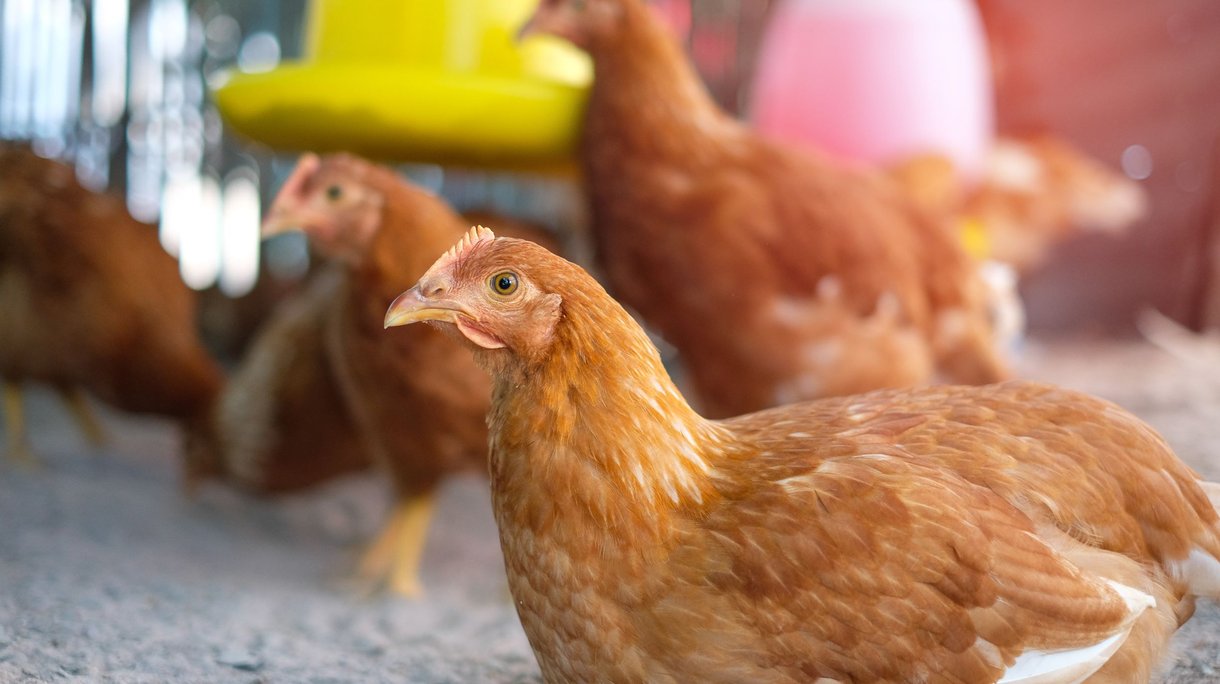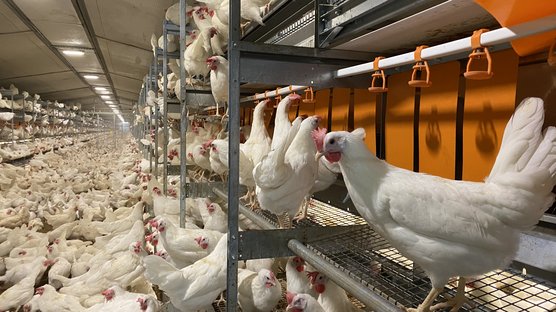
Published on Nov. 16, 2020
Tips and Tricks for Rearing Poultry in Hot and Tropical Climates
Rearing chicken pullets according to standard and achieving good egg production can be challenging in hot climates or tropical environments. The optimal environmental house temperature for laying hens is around 25°C. Chickens that are already acclimatized to warm weather can regulate their body temperature up to 30°C, but beyond that point, heat stress in poultry becomes a risk. To ensure high productivity and bird welfare, you must take measures to manage the climate inside your chicken coop or poultry house.
Thankfully, many solutions for poultry production in hot climates are practical and affordable. By focusing on smart hot weather management of poultry, farmers can still achieve excellent results, even in regions like Kenya or other tropical countries.
Cooling and Chicken Coop Ventilation
Cooling the chicken coop can be achieved with cool cell pads for poultry houses, which significantly lower the indoor temperature. Be careful not to direct the cooled airflow straight at the birds to avoid creating a draught. Alternatively, spraying the roof with water helps reduce heat when the poultry house is exposed to direct sunlight. The evaporation of water cools the surrounding air, offering relief to your tropical live poultry.
Inside the coop, foggers can be installed to produce evaporative cooling. These methods should only be used when the relative humidity is not too high, as excess humidity can hinder cooling effectiveness.
Proper chicken coop ventilation is crucial. Unlike mammals, chickens don’t sweat—they pant to release heat, which increases humidity in the house. Removing this moist air helps prevent heat buildup. Poultry ventilation systems must allow constant airflow to maintain a healthier climate.
Stocking Densities in Tropical Poultry Production
High stocking densities can exacerbate heat buildup and cause chicken heat stress symptoms. To prevent this, especially in naturally ventilated barns in tropical regions, reduce the number of birds per square meter. Giving your pullets and hens more space reduces internal heat production and improves performance.
Optimizing Lighting Programs in Hot and Tropical Climates
In hot and tropical climates, poultry often experience reduced appetite due to heat stress, especially during the hottest hours of the day. Adjusting your lighting program is an effective tool to mitigate this.
A longer step-down lighting schedule during the rearing phase is recommended. This encourages feed intake by providing light during the cooler early mornings and evenings, when birds are more comfortable and more likely to eat. This strategy supports consistent growth, even in chicken coops exposed to high ambient temperatures.
Another technique is mid-night lighting—providing a short light period of 1.5 to 2 hours in the middle of the dark phase. This gives the birds a chance to feed and drink during the cooler hours of the night. It is especially useful after transfer to the laying house, during the early production phase, or during extended periods of chicken heat stress.
Mid-night lighting also improves eggshell quality, as hens can ingest calcium near the end of the shell formation cycle. However, if used during 10–16 weeks of age, it should be applied with caution, as it may interfere with proper sexual development. Once no longer needed—either because target weights are reached or temperatures drop—mid-night light should be phased out gradually (max. 30 minutes per week) to avoid negative effects on feed intake and bird behavior.
Whether you're managing chicken rearing in Kenya or operating poultry farms in other warm regions, light management remains a vital tool for promoting bird health and productivity under heat pressure.
Feed Strategies to Mitigate Chicken Heat Stress
In poultry production in hot climates, nutrition plays a key role in minimizing the impact of heat stress in poultry. High temperatures can alter metabolism and reduce feed intake, so smart feeding strategies are essential.
Start by enhancing the birds' resilience through nutritional supplements. During heat stress, birds synthesize less vitamin C, which is essential for the production of anti-stress hormones. Adding vitamin C to the drinking water helps restore this balance and supports stress recovery.
Similarly, bicarbonate (HCO₃) supplementation is valuable. Due to increased respiration during heat stress, birds lose CO₂, leading to more alkaline blood (respiratory alkalosis). This shift affects calcium metabolism and weakens eggshell quality. Supplementing bicarbonate helps neutralize the imbalance and supports continued shell formation—especially important for heat-resistant chicken breeds during production peaks.
Feeding birds during the cooler parts of the day is another key strategy. You can synchronize feeding times with lighting adjustments, encouraging intake early in the morning or late at night when temperatures are lower. This tactic ensures sufficient nutrient uptake and helps prevent chicken heat stress symptoms like panting, lethargy, and decreased egg production.
Ultimately, a proactive feeding approach, combined with proper chicken coop ventilation and cooling, ensures that your flock remains productive and healthy—even in the most challenging tropical climates.
The Easiest and Cheapest Tip: Cool Drinking Water
One of the most cost-effective methods to counter chicken heat stress is managing the drinking water temperature. Cool, fresh water helps birds maintain their body temperature and encourages feed intake. Ensure the water never exceeds the birds’ body temperature. Regularly flush the drinkers, insulate tanks and pipelines, and keep tanks shaded. Simple measures like painting tanks white or building a roof over them can significantly lower water temperature.

Too high pullet stocking densities will result in more heat production, and therefore more heat stress. It is advised to give chickens housed in naturally ventilated barns in hot and tropical climates, more space, e.g. reduce your pullet stocking density.
Successfully managing egg and poultry production in hot climates requires a thoughtful combination of smart chicken coop design, efficient ventilation systems, climate-responsive lighting programs, and strategic feeding practices. With proactive planning and relatively low-cost interventions—such as installing cool cell pads, adjusting stocking densities, and supplementing with vitamin C—you can minimize the effects of chicken heat stress and keep your flock healthy and productive. Whether you're involved in chicken farming in Africa, Southeast Asia, Central America, or any other tropical live poultry environment, understanding how to adapt your system to the heat is essential. By putting these tips and tools into action, your chicken farm can thrive, even under the toughest environmental conditions.



